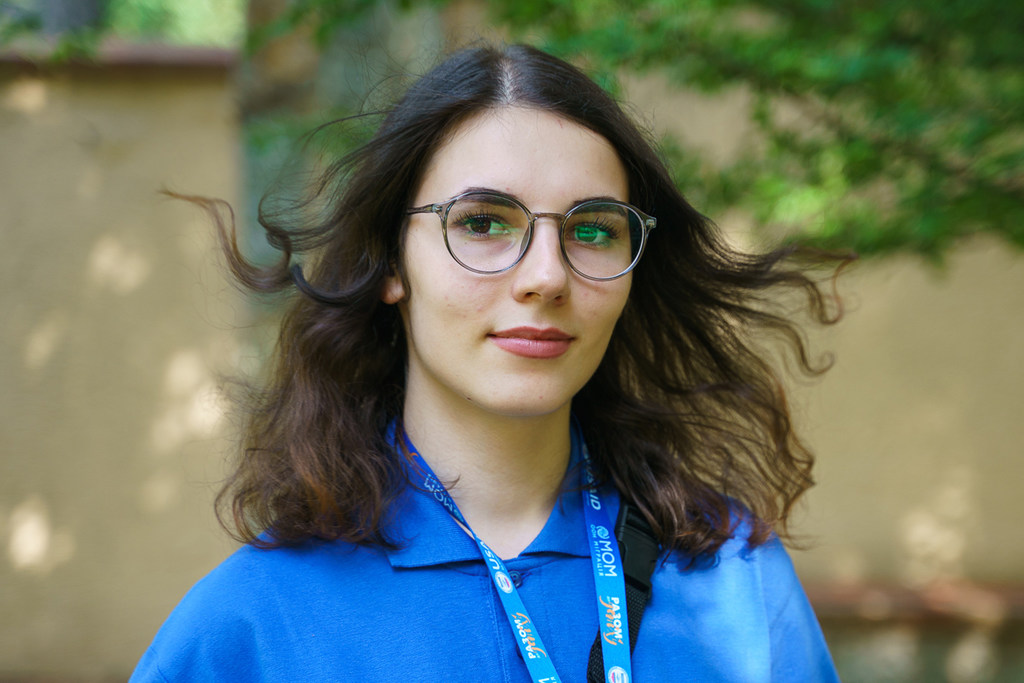Six months after the Russian invasion, Ukraine is the scene of the biggest humanitarian crisis in Europe since World War II. Nearly a third of those displaced by the conflict come from the region around Kharkiv, the country’s second largest city, in the east. Helping those in need is dangerous work.
Before dawn on February 24, Kharkov received a heavy blow. Within 24 hours, Russian troops had reached the northern suburbs, which are only 30 kilometers from the Ukraine-Russia border. Despite outnumbering the Ukrainian forces, the invading army was unable to enter the city.
“I’m from Kharkov, from one of the biggest residential areas in Ukraine – Saltivka. This is a place where about 400,000 people lived before the war,” says 21-year-old Tanya, who has found a temporary home in the Ivano-Kia region. Frankivsk and has participated in a summer school run by the International Organization for Migration (IOM) for young leaders, including displaced people and members of hosted communities.
“For two weeks, my family and I did not leave the subway station, not even for a minute.. The subway became the main bomb shelter for the locals. I didn’t want to leave the city, because my grandparents had stayed behind. However, when they came to see us in Kharkov, I decided to run away from the war.”
Seven million displaced within the country
According to a recent study by the UN agency, about 28% of Ukraine’s estimated 6.8 million internally displaced persons fled the Kharkov region. The humanitarian needs of those who decided to stay, or were unable to flee, are immense..
In May, the city received IOM’s first humanitarian convoy, containing much-needed items for people in shelters and hospitals, as well as for hard-to-reach communities in Ukrainian-controlled areas.
“The inhabitants of the area need solar lamps because there is no light. It is damp and cold in the shelters, so they need mattresses and blankets; in addition, they need tools to make small repairs to their damaged houses and they require hygiene kits,” he explains. Serhii, director of Source of Revival, one of the largest non-governmental organizations in the region and an IOM partner in the Kharkov region.
In the early months of the war, the Source of Revival team’s workday began at 6:00 in the morning and ended at 3:00 in the afternoon, when a curfew was established and all movement in the city was prohibited. The location of the warehouses had to be changed several times due to heavy shelling, missiles and air strikes.
Not all drivers agreed to go to this dangerous area. Since then, the situation has worsened, the number of victims continues to rise and yet no one from the team has left Kharkiv. Bulletproof vests and protective helmets were donned to bring IOM aid to those most in need.
“There is nothing left alive.”
Nadia, who currently lives on the outskirts of Kharkiv, fled her home in the city of Derhachi in March after heavy shelling and after discovering she was pregnant.
“Now there is nothing left alive in Derhachi,” he recalls. “There’s shelling here too, but not as fierce as in my hometown, until a missile hits a nearby school and then we’ll move again,” she says.
Source of Revival brought IOM humanitarian aid directly to Nadia’s temporary home, as it was especially difficult for a pregnant woman to navigate the dangerous city.
The most difficult part of the team’s work is bringing aid to the communities that survived the Russian occupation. Although Ukrainian forces recaptured the area, it takes time to clear the area. Despite this, NGOs strive to reach people in critical need as quickly as possible.
“Some settlements were razed. There are a lot of local Irpins and Buchas in our region,” says a Source of Revival staff member, referring to the population belonging to the two towns in the oblast or kyiv region occupied by Russia at the beginning of the war, where evidence points to significant human rights abuses being committed against civilians. Abuses including exploitation, kidnapping for ransom, robbery, intimidation, torture, rape and sexual abuse of women, children, the elderly and men.
Everything has changed
Aid workers are helping local residents and identifying victims of conflict-related violence. All of them can go to the IOM center for their physical and psychosocial rehabilitation.
Recently, Kharkiv has been receiving more and more displaced persons fleeing from the neighboring regions of Donetsk and Luhansk. And, despite the security situation, even the residents of Kharkiv are returning home with high hopes.
“They want to rebuild this place, but everything has changed,” says el Serhii, director of source of revival, whose house was damaged by bombing. “Infrastructures are damaged, houses destroyed, there are no jobs and part of the region is still occupied. Russian troops are trying to get closer to the city, so the threat remains, and the chaotic bombing continues.”
According to the authorities, in the last 181 days, more than 1,000 civilians have been killed in the Kharkov region, a figure that includes 50 children, and that may increase. Here, calm is deceptive and the situation can change in the blink of an eye.
On 18 August, 21 civilians were killed and 44 wounded in a single night as a result of a missile attack on a residential area. However, just like 79 years ago, the locals believe in their land and in justice, revealing the same strength and character as their ancestors.
“I draw strength from my team. I understand that most of them could leave Kharkov, but they stayed. They are the first to put on their vests, helmets and go to help othersSerhii says.
IOM partners in Ukraine
More than 13 million people have been forced to flee their homes, seeking safety elsewhere in the country or protection abroad. Entire cities and towns have been razed to the ground and according to the UN more than 5,500 civilians have lost their lives.
Since May, Source of Revival has distributed more than 16,000 solar lamps, 7,000 blankets, 3,000 hygiene kits, 5,000 mattresses, 18,000 towels, 10,000 jerry cans and other IOM non-food aid in the Kharkov region.
Supplies continue to pour in thanks to the European Union in Ukraine, the United States Agency for International Development (USAID), the Ukraine Humanitarian Fund, the UN Central Emergency Response Fund (CERF), as well as governments from Japan, Canada, Germany, France, Denmark, Kuwait, South Korea, Sweden and Slovakia.














Add Comment